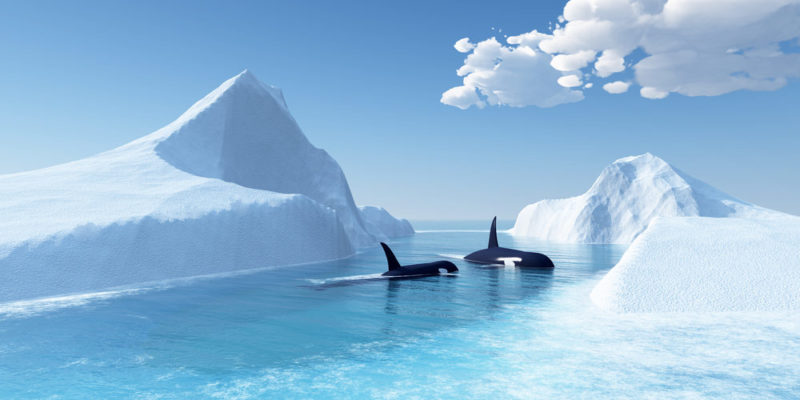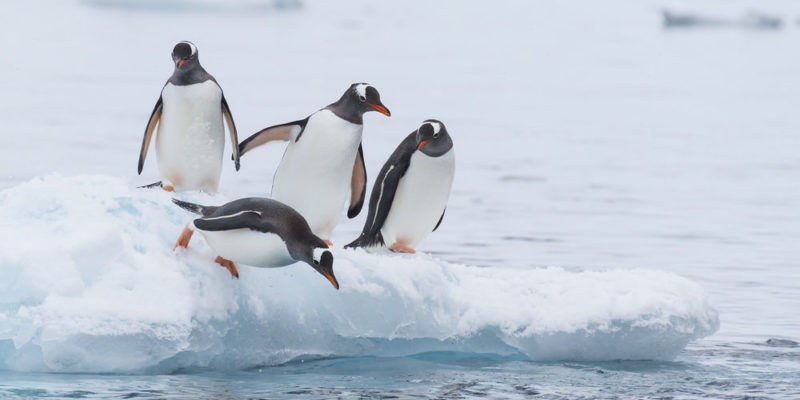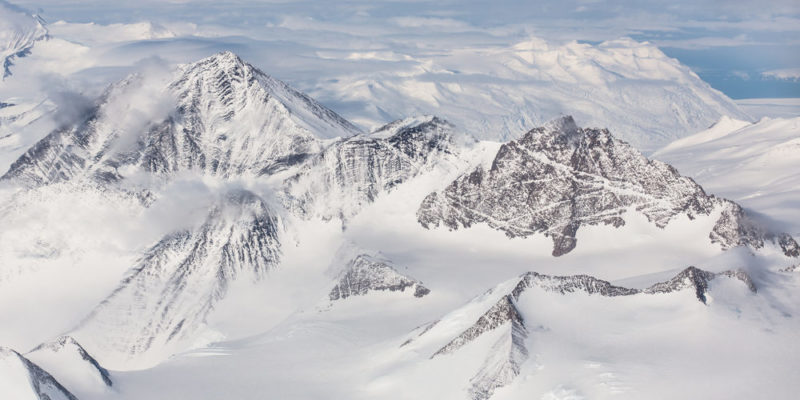We explain what Antarctica is, what the climate, flora, and fauna of this continent are like. Also, what are its features, resources, and more?
What is Antarctica?
Antarctica, also known as the sixth continent , is a semicircular land mass of about 45,000 kilometers in diameter , located on the globe below the 60° South parallel.
It is the coldest, driest and highest continent of all and it is also where the South Pole is located , the southernmost possible place on the planet and the one with the lowest recorded temperatures .
Commonly included as part of Antarctica are South Georgia , the South Sandwich Islands, the Kerguelen Archipelago, and Bouvet, Heard, and McDonald Islands, all surrounding the polar shelf. This in turn is divided into West Antarctica or Lesser Antarctica, significantly smaller in proportions, and East Antarctica or Greater Antarctica, which encompasses the rest of the continent.
Characteristics of Antarctica :
Variable surface
 Covered with a blanket of ice, the total surface of Antarctica varies according to the season. In summer it decreases to 14 million square kilometers in total , while in winter the sea freezes and the total area rises to 30 million square kilometers, as the ice advances over the Antarctic Glacier Ocean.
Covered with a blanket of ice, the total surface of Antarctica varies according to the season. In summer it decreases to 14 million square kilometers in total , while in winter the sea freezes and the total area rises to 30 million square kilometers, as the ice advances over the Antarctic Glacier Ocean.
Polar climate
The Antarctic climate system is not kind. The average temperature during the warmest month does not exceed 0 °C , the freezing point of water . In the winter months an average of -17 °C is recorded, although there are high areas where it is possible to reach -93 °C.
Flora and fauna

The flora is reduced to various types of fungi , mosses and lichens , except for a couple of plant species native to the islands, which bloom for a couple of weeks at the most in summer.
Regarding the fauna, the landscape is scarce on the continent, but abundant in the waters just above the freezing point. Giant jellyfish, anemones and crustaceans are common , as well as penguins, seals and cormorants that feed on cold-resistant fish, such as Antarctic cod, capable of producing antifreeze substances in their tissue. Krakens (giant squid) and the majestic blue whale are also often seen.
Mineral resources
Protected by ice, many minerals sleep in Antarctica: and huge coal deposits and large reserves of iron , as well as antimony, chrome, gold , molybdenum, uranium, oil and diamonds.But the arduous climatic conditions and the maritime difficulties of trade have made its sustained extraction unfeasible . To this is added, in addition, the enormous environmental risks that said economic operation would entail.
long days and nights
 Another particularity of the Antarctic climate is its six-month days and nights , due to the tilt of the Earth on its axis as it rotates, hiding its southern end from the sun for six months and then exposing it for as many others.
Another particularity of the Antarctic climate is its six-month days and nights , due to the tilt of the Earth on its axis as it rotates, hiding its southern end from the sun for six months and then exposing it for as many others.Thus, during the summer solstice in Antarctica there is sunlight 24 hours a day , giving rise to the so-called "white nights", while at the winter solstice there are days when it does not appear at all.
The largest water reserve on the planet
It is estimated that 80% of the planet's fresh water is contained in the immense polar cap of Antarctica . If all that ice melted, the world's water level would rise about 60 meters.
A great frozen desert
 Antarctica is a brutally arid place. In fact, it is the driest place in the world , a snowy desert that covers 90% of the continent and in which there do not seem to be any major signs of life . This is due to its very low rainfall (barely an average of 166 mm per year) neither in liquid form nor in snow.
Antarctica is a brutally arid place. In fact, it is the driest place in the world , a snowy desert that covers 90% of the continent and in which there do not seem to be any major signs of life . This is due to its very low rainfall (barely an average of 166 mm per year) neither in liquid form nor in snow.
Ice cap
Most of the land surface of Antarctica is covered by a dense ice sheet or indlandsis (Danish term for polar desert), which has an average thickness of 2,500 meters although it can sometimes rise to over 4,000. Its total volume has been estimated at about 20 million cubic kilometers.
International bases

International claims
The current territory of Antarctica is divided among seven interested nations , despite the fact that said distribution does not have the consent of any international organization. Argentina , Australia, Chile , France , Norway, New Zealand and the United Kingdom are currently disputing the sovereignty of the southern continent.The above content published at Collaborative Research Group is for informational and educational purposes only and has been developed by referring reliable sources and recommendations from technology experts. We do not have any contact with official entities nor do we intend to replace the information that they emit.
Passionate about understanding and contributing to a world that does not stop changing. New forms of Work, Sustainability and Technology. For many years he has worked as a creative for large international companies. He has a Ph.D. in information technology and he has been doing quantitative research in the interdisciplinary areas of information systems, cyber security, data analytics and artificial intelligence. He continue to look for creative solutions through technology to help companies to be more humane and sustainable..
Leave a reply
Your email address will not be published. Required fields are marked *Recent post

Sport: What Is It, Types, Risks, Features, Characteristics and Examples

Dogs: Emergence, Features, Characteristics, Feeding and Breeds

Story: Definition, Elements, Structure, Features and Characteristics

